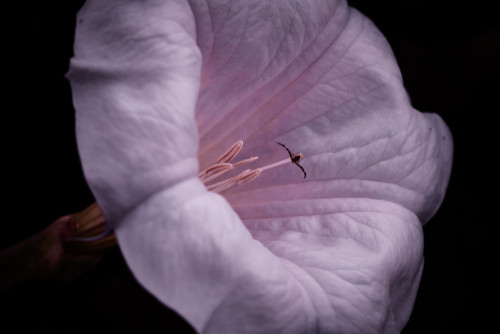Popular Reads
Top Results
Can't find what you're looking for?
View all search resultsPopular Reads
Top Results
Can't find what you're looking for?
View all search resultsScientists have evidence that some cave art was inspired by hallucinogenic plants
Researchers have long imagined a correlation between psychotropic substance and cave art but they didn't have any substantial proof... until recently.
Change text size
Gift Premium Articles
to Anyone
R
esearchers have long imagined a correlation between psychotropic substance and cave art but they didn't have any substantial proof... until recently.
A new study provides evidence that native Californian cave artists took hallucinogenic plants when creating rock paintings.
Archeologists have long thought that native tribes were in the habit of eating Datura wrightii concoctions to enter a trance state during religious ceremonies. However, they had never managed to determine the origin of the abstract, even psychedelic images that these ancient cultures painted on cliff and cave walls.
For this research, an international team focused on a red swirling pattern drawn by natives in California's Pinwheel Cave, north of Santa Barbara. This painting has been retouched over the years, proving its importance for communities living nearby. However, its meaning has remained a mystery, until recently.
The team of archeologists claims that this pattern represents a Datura flower opening its blooms at dusk, and that groups of people probably organized ceremonies in the Pinwheel cave, where they ate the plant.
Read also: Tiny songbird is East Asia's 'oldest' carved artwork
They found bundles of fibers known as quids inserted into the ceiling of the cave near the paintings. These fibers are over 400 years old. The team also found tools and artefacts on the ground site, which allowed the researchers to determine that people lived on this site between 1530 and 1890.
"Three-dimensional (3D) analyses of the quids indicate the quids were likely masticated and thus consumed in the cave under the paintings. Archaeological evidence and chronological dating shows the site was well utilized as a temporary residence for a range of activities from Late Prehistory through Colonial Periods. This indicates that Datura was ingested in the cave and that the rock painting represents the plant itself, serving to codify communal rituals involving this powerful entheogen," reads the study, published in Proceedings of the National Academy of Sciences.
While the archeologists don't exactly know why this swirling drawing was painted in the Pinwheel cave, they take this illustration as evidence that they consumed datura as a group in this location, during initiation ceremonies or to prepare for hunting expeditions.
"The evidence at Pinwheel Cave shows that the hallucinogens were taken in a group context, and that the art communicated the ecology of the plant behind the trance rather than the images seen during the trance. So the art is all about codifying the experience of the effects that the plant creates for the cohesion of the whole society," said David Robinson, an archeologist at the University of Central Lancashire and main author of the research paper, to The Art Newspaper.











